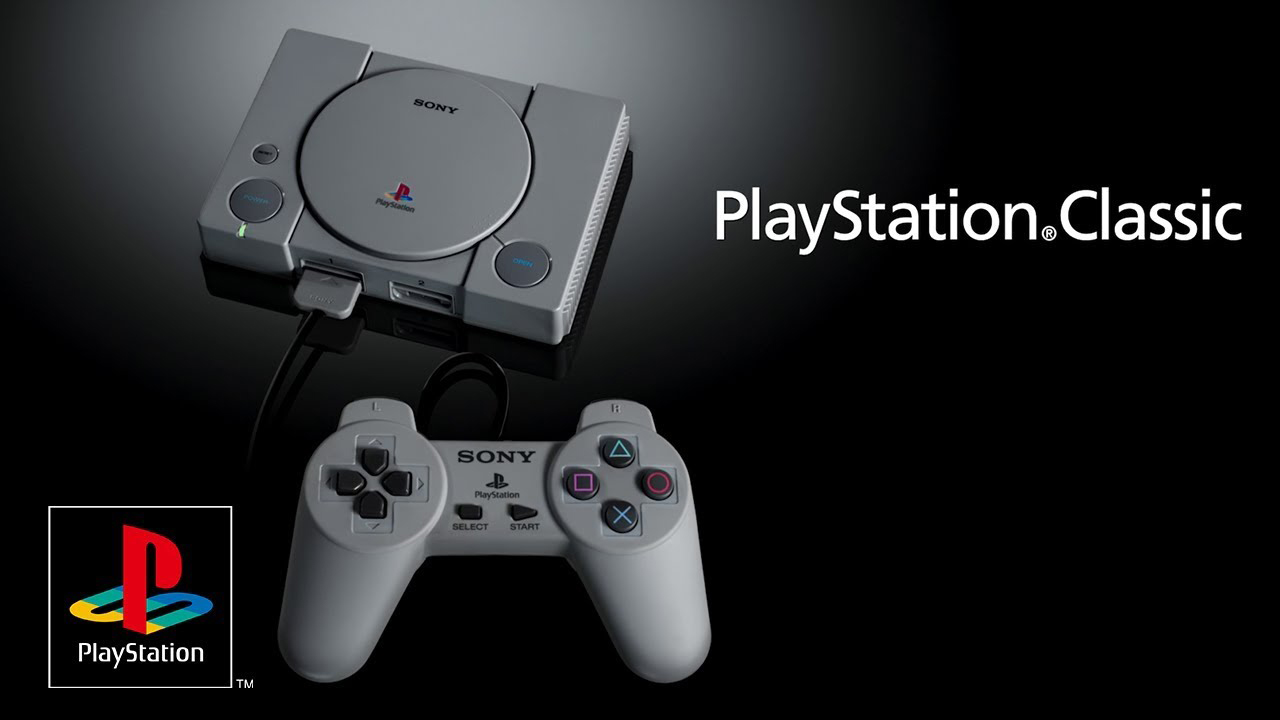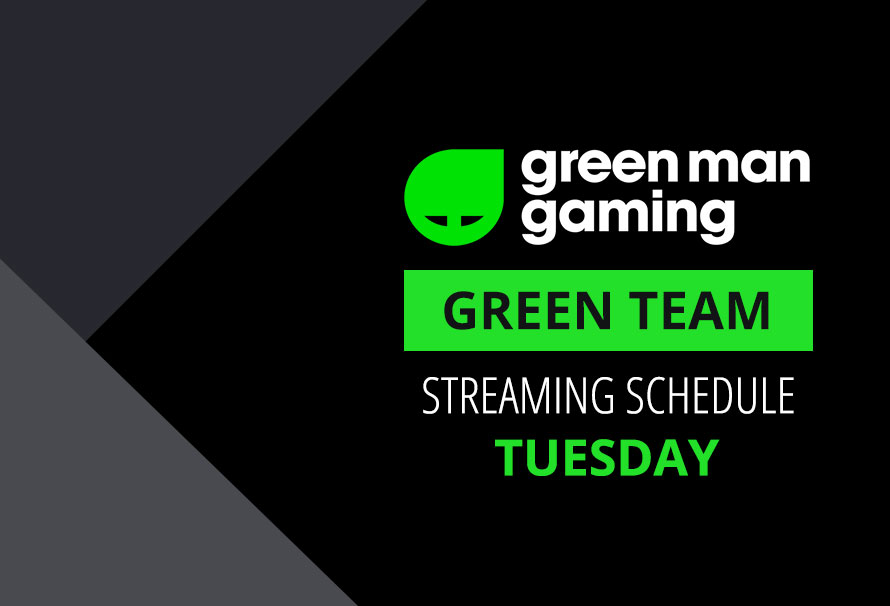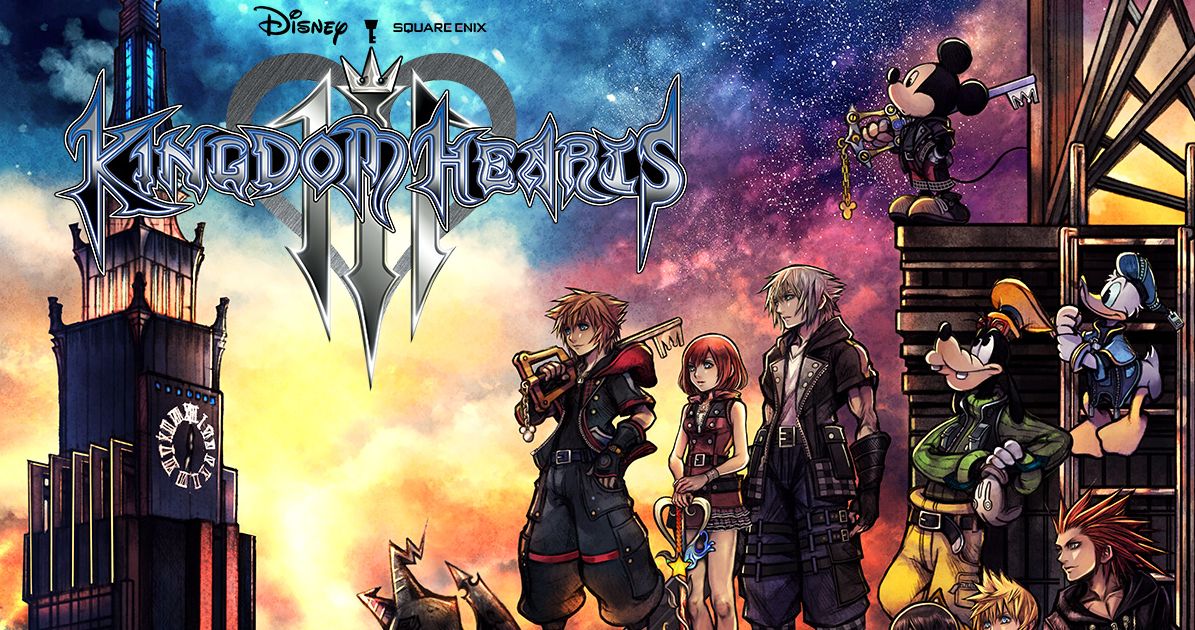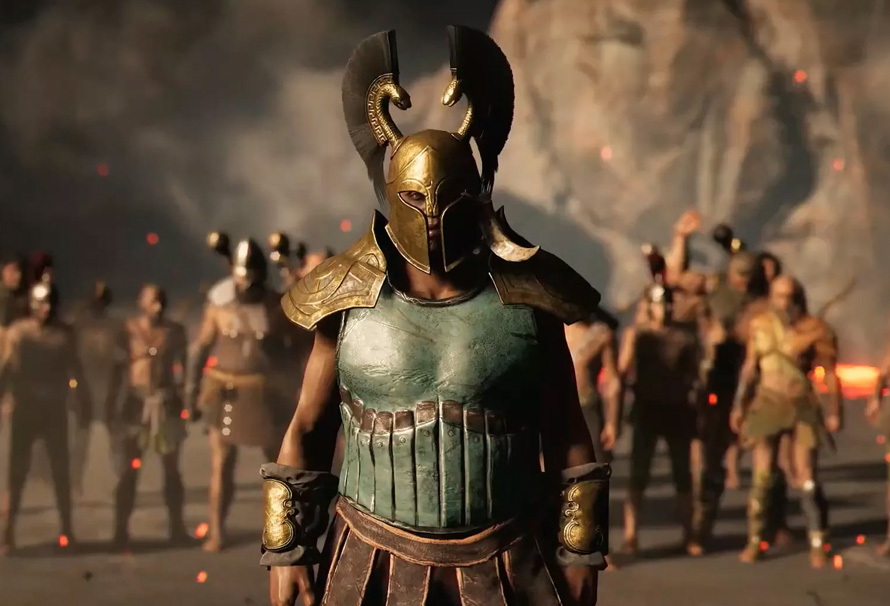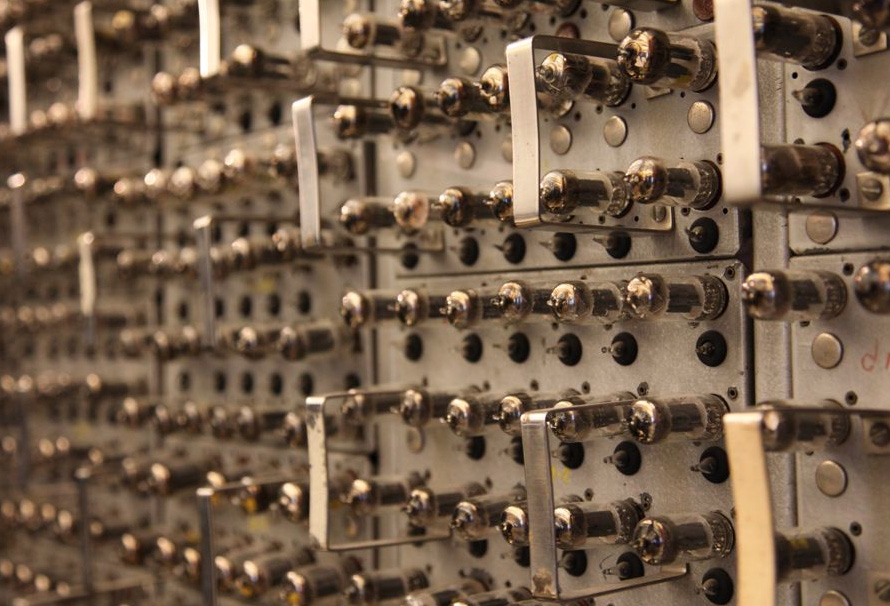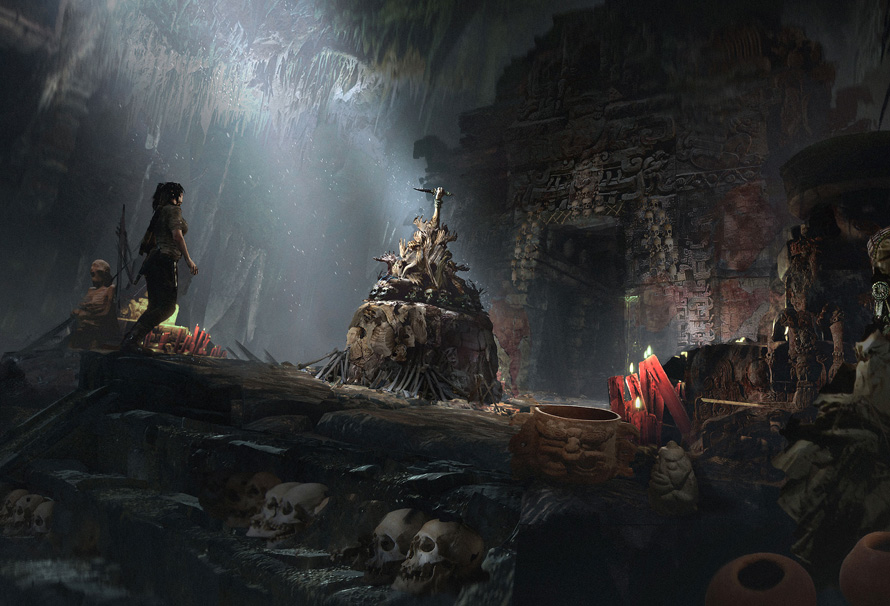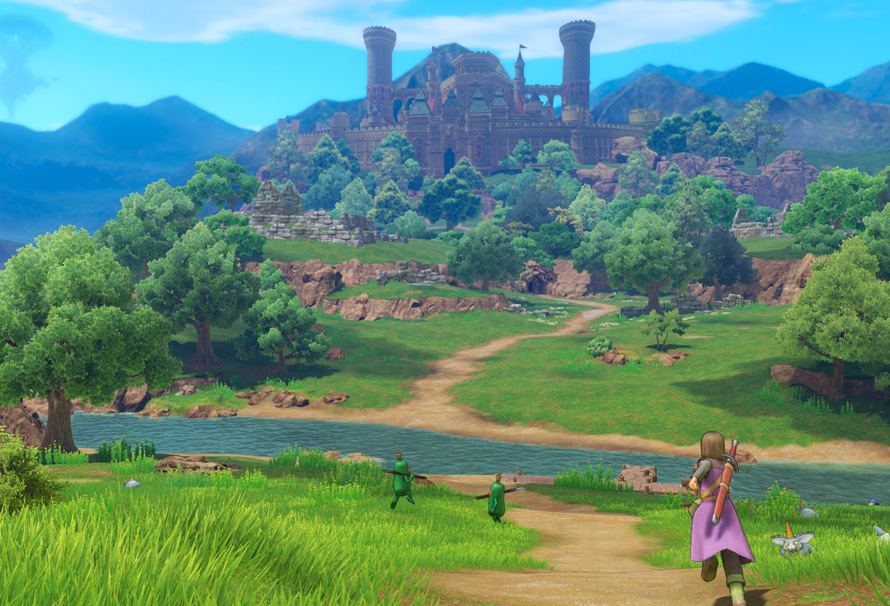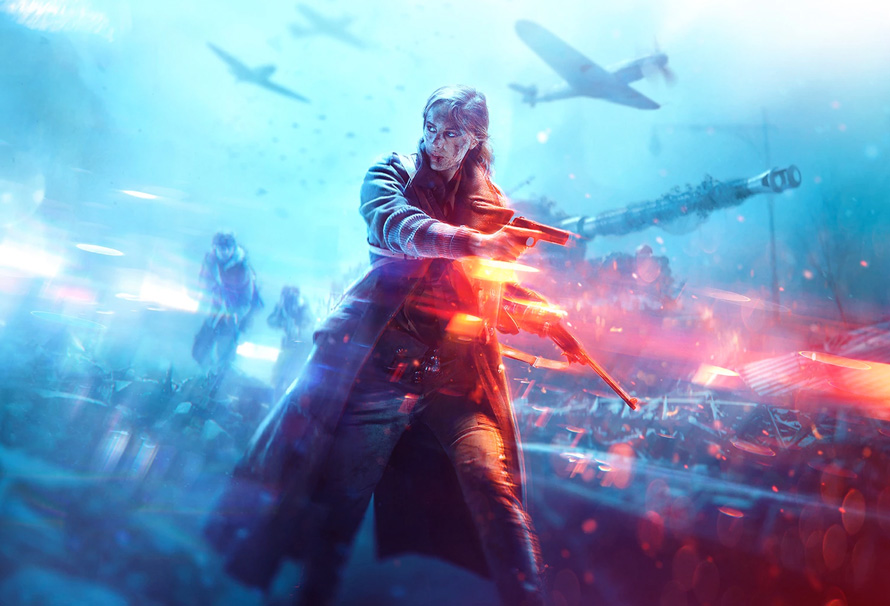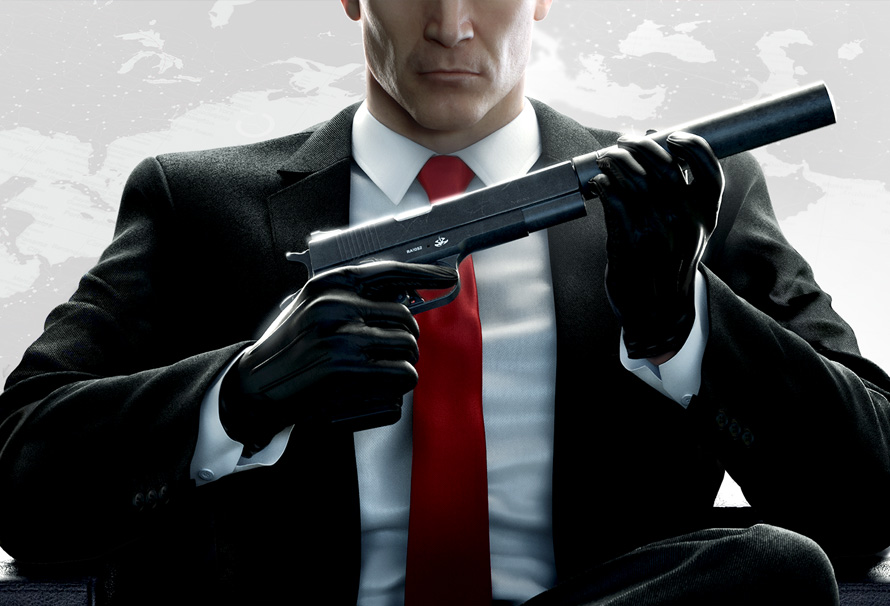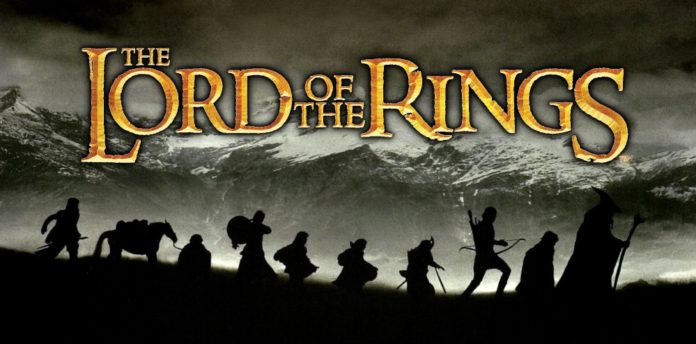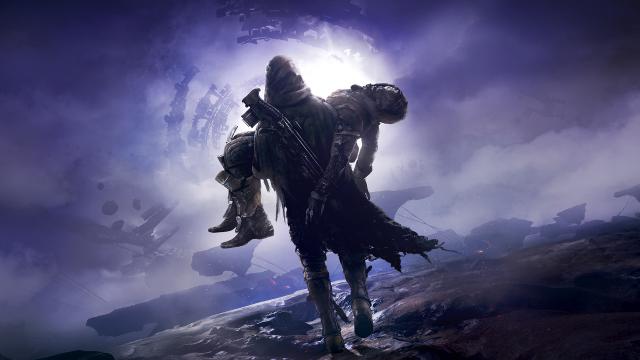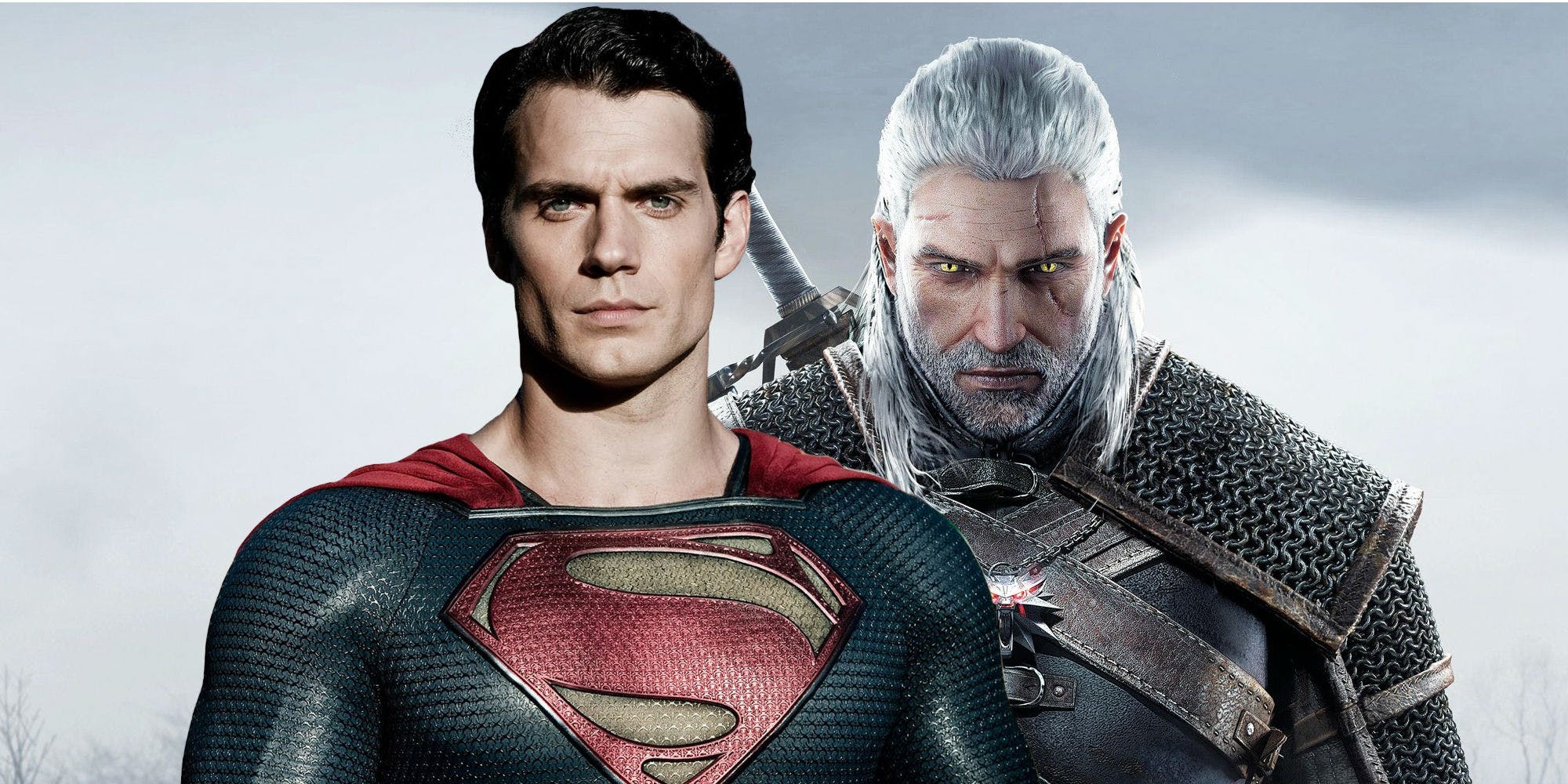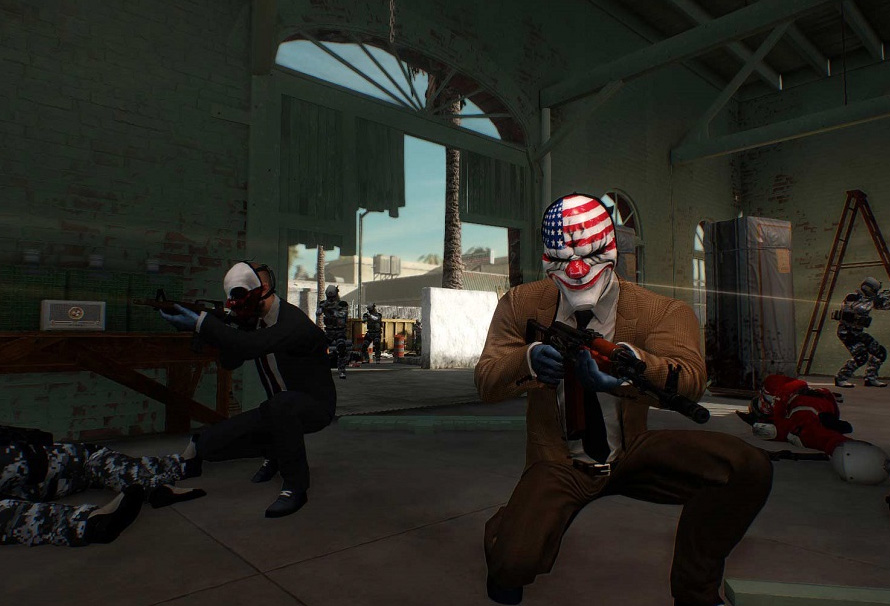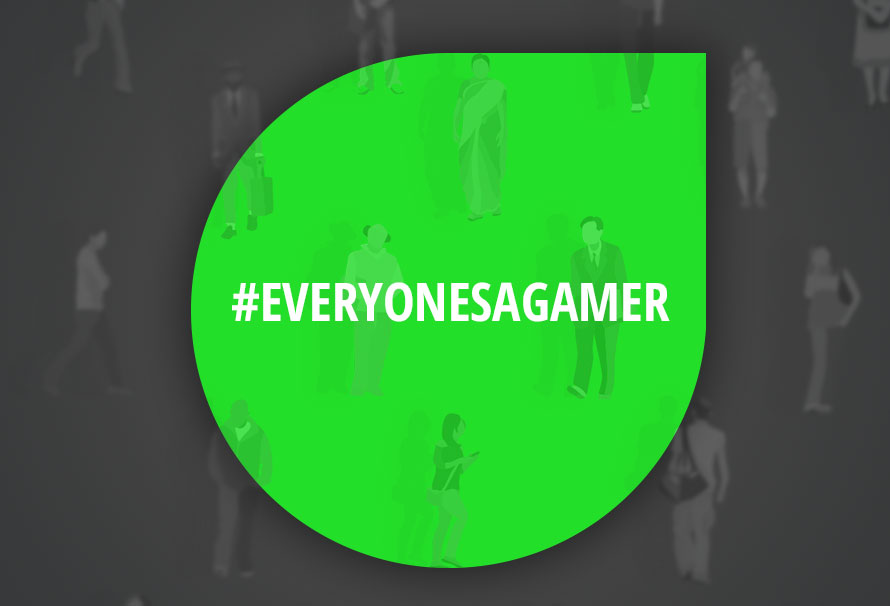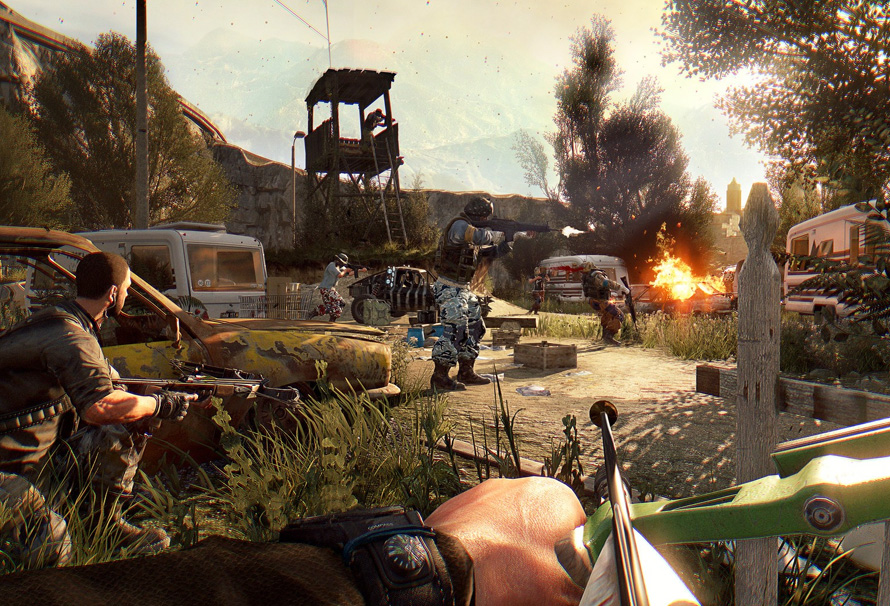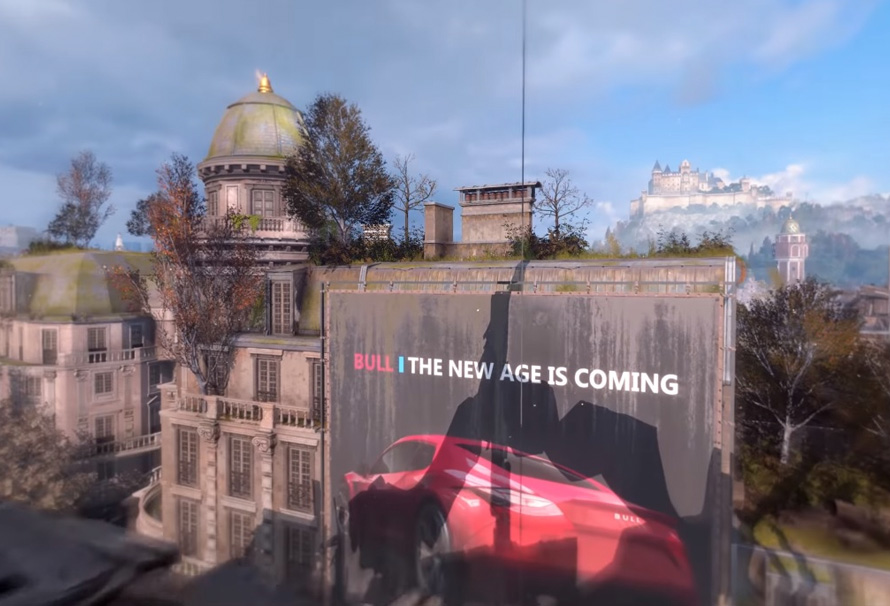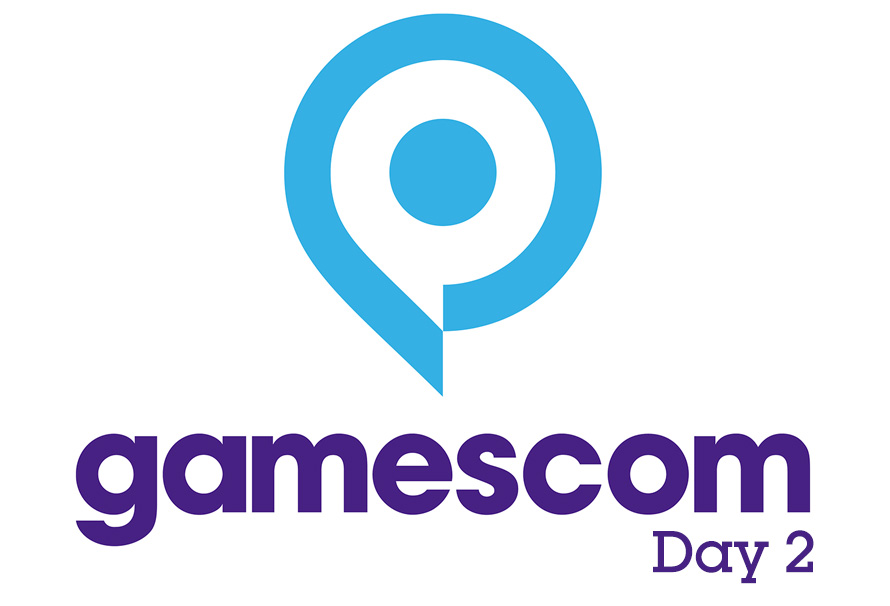Following Nintendo’s bold and profitable footsteps into the ‘nostalgia console’ space, Sony has revealed the PlayStation Classic.
Green Team Streamer Schedule – 18th September
Looking for a stream to watch this evening? Well the Green Team is ready to entertain you! Check out below what games are being played by these mighty individuals, and what time and day you can catch them.
| Game | Name | Time (BST) |
|---|---|---|
| Stick Fight: The Game | FuzzyFreaks | 19:00 |
| Kingdom Come: Deliverance | Drogith | 2:00 |
Kingdom Hearts III Gets Bumper TGS Trailer
As Tokyo Games Show kicks off, a new, updated Kingdom Hearts III trailer has been released by Square Enix.
Assassin’s Creed Odyssey – What we know so far
Only a year after taking gamers to a beautifully realised ancient Egypt, Assassin’s Creed returns. And it’s keeping its sandals on.
Odyssey takes place during the year 431 BCE in ancient Greece where a fictional civil war between Athens and Sparta rages. With revamped combat, the return of naval battles, and many key new features, it’s sure to be one of 2018’s standout releases. Here’s what to expect.
Assassin’s Creed Odyssey release date
The game’s available from October 5th across all regions. That’s slightly earlier in the year than Origins released – October 27th 2017.
Assassin’s Creed Odyssey system requirements
Here’s what Ubisoft recommends for running the game:
Minimum Requirements
- OS: Windows 7 SP1, Windows 8.1, Windows 10 (64-bit versions only)
- Processor: AMD FX 6300 @ 3.8 GHz, Ryzen 3 – 1200, Intel Core i5 2400 @ 3.1 GHz
- Video: AMD Radeon R9 285 or NVIDIA GeForce GTX 660 (2GB VRAM with Shader Model 5.0)
- Memory: 8GB RAM
- Resolution: 720p
- Targeted framerate: 30 FPS
- Video Preset: Low
- Storage: 46GB available hard drive space
- DirectX: DirectX June 2010 Redistributable
- Sound: DirectX 9.0c compatible sound card with latest drivers
Recommended Specifications
- OS: Windows 7 SP1, Windows 8.1, Windows 10 (64-bit versions only)
- Processor: AMD FX-8350 @ 4.0 GHz, Ryzen 5 – 1400, Intel Core i7-3770 @ 3.5 GHz
- Video: AMD Radeon R9 290 or NVIDIA GeForce GTX 970 (4GB VRAM or more with Shader Model 5.0) or better
- Memory: 8GB RAM
- Resolution: 1080p
- Targeted framerate: 30 FPS
- Video Preset: High
- Storage: 46GB available hard drive space
- DirectX: DirectX June 2010 Redistributable
- Sound: DirectX 9.0c compatible sound card with latest drivers
Recommended 4K Configuration
- OS: Windows 10 (64-bit versions only)
- Processor: AMD Ryzen 1700X @ 3.8 GHz, Intel Core i7 7700 @ 4.2 GHz
- Video: AMD Vega 64, NVIDIA GeForce GTX 1080 (8GB VRAM with Shader Model 5.0)
- Memory: 16GB RAM
- Resolution: 4K
- Targeted framerate: 30 FPS
- Video Preset: High
- Storage: 46GB available hard drive space
- DirectX: DirectX June 2010 Redistributable
- Sound: DirectX 9.0c compatible sound card with latest drivers
Assassin’s Creed Odyssey setting
It’s off to ancient Greece for the first time in the series in Odyssey, where a huge archipelago world map awaits and where political borders are subject to your actions and decisions. With so many islands to navigate between, aquatic vessels take on greater prominence here than we’ve seen in the series since Assassin’s Creed IV: Black Flag, while on land you’ll be exploring the rugged mountains of northern Greece, lush greenery on Kefalonia Island, the urban sprawl of Peloponnese, and the harsh volcanic climes of the arid islands, to name a few.
Assassin’s Creed Odyssey story
As either Alexios or Kassandra, the player is a mercenary who finds themself embroiled amidst civil war – and, this being a videogame, given a huge amount of agency over how that war plays out. Also in-keeping with the series’ tradition, there’s a modern-day narrative to which Leyla Hassan of AC Origins returns.
Assassin’s Creed Odyssey combat
Building on Origins’ hitbox-based, RPG-like combat system, the fighting in Odyssey bestows four melee ability slots, and four slots for the bow, on the player. Charging up these abilities in combat lets you unleash special moves – like the iconic kick from Zack Snyder’s 300 – in battle. And for their part, battles now come in both large and small-scale varieties. Well, there is a war on, after all.
Video Games Day – The most iconic game from each decade
Video games are brilliant.
They’re not only brilliant, but they’re quite old now. We’ve had video games for probably longer than you’d expect, stretching back into the mists of time (well, a few decades).
We decided, to celebrate video games and their history, to take a look back and pick out one iconic game from each decade which we feel sum up the period.
Tennis for Two – 1958

One of the very first video games, Tennis for Two simulates a simple game of tennis and was designed to be played on analogue computers.
The way it works is that you’re playing the game as if you’re seeing it sid eon, and each player uses a rotating control to determine the angle of shots.
Maybe not the first video game, and maybe not the most influential, but it was the first designed solely for entertainment and thus led the way into video games becoming the utter juggernaut they are today.
Spacewar! – 1962

A space combat dogfighting game, Spacewar! (the ! is important) is probably one of the most influential video games ever made. Released for the PDP-1 in 1962, it was ported to other systems and was one of the first commercially available video games made.
Featuring two spaceships locked in a dogfight while trapped in the gravity well of a star, this multiplayer game features Newtonian physics, limited fuel, and limited torpedoes. Meaning that you get the core of gameplay loop, you have to juggle your constant motion relative to your enemy and the star and your limited resources at all times.
You can see the lineage going from this to games such as Asteroids, Star Control, and many more.
Pong – 1972

You know Pong, everyone knows Pong.
If you don’t know Pong, it was one of the first arcade games, leading the way for video games to become a social experience. It was eventually ported to pretty much every system ever made, but originally it was a wooden cabinet with housed this monochrome tennis-em-up.
As with the previous games on this list, it was multiplayer only game and has been described as a ‘social lubricant’. With its simple controls and easy to understand method of play, it helped introduce the world to gaming.
The Legend of Zelda – 1986

it was the 80s where video games began to dream bigger. Famously inspired by Miyamoto’s walks in the Kyoto countryside as a child, The Legend of Zelda aimed to give the player a whole world to explore with childlike wonder and danger at every corner.
The Legend of Zelda didn’t just start off the Zelda series, but it also helped expand the cRPG, adventure game, action adventure, and open world genres. We’re not saying it invented these genres, but many games of those genres that you play even today have DNA that goes right back to that small child Link heading out into the big world, alone except for a sword.
Doom – 1993

No that’s right, not Wolfenstein 3D. Doom didn’t just revolutionise the FPS genre in terms of speed, variation of enemies and weapons, level design, and demon blasting.
It’s a game that’s got a long reach, with almost every FPS since owing at least some small debt to Doom. Not only that, it cemented Id as The Place Where Good FPS Games Get Made, with Doom II, the Quake series, and much more coming out of the legendary studio.
Not only is the game still worth playing today, it’s easily moddable and new levels can be added as simply as adding a .WAD.
Halo – 2001

Halo summed up the 2000s, not just because it’s a damn fine shooter (it is) but because it proved you could have a shooter that works on console. It’s undoubtable that playing with mouse and keyboard is better for speed of aiming and accuracy, but what if you just want to play on a sofa?
Halo proved that it’s possible, and it introduced the wider world to Bungie and the Xbox, both of which helped define and change the gaming landscape for over a decade since.
Hard to believe that originally Halo was a Mac exclusive that was a third person shooter. You’ve come a long way, baby.
Dark Souls – 2011

We’ve still got two years of the 2010s left but it’s safe to say that Dark Souls is the defining game of this decade. Almost every game now is either compared to it, or features elements directly inspired by it. The simple idea of having a persistent playthrough where death isn’t the end of your journey has been a staple of the last few years in the gaming world and one that doesn’t seem to be going away any time soon.
Not only does the game excel mechanically with its precise combat, but the world itself is something that many games have taken cues from. A vast interconnected world that hints at larger stories just underneath the surface is a heady mix, and one that Dark Souls delivers in spades.
That’s the games we’ve decided to call out as the most iconic of the last few decades. Agree or disagree? Let us know in the comments below.
Why Shadow of the Tomb Raider Is Shaping Up To Be The Perfect Trilogy Finale
Due for release in just a few days, Shadow of the Tomb Raider puts a capper on the second rebooted trilogy of one of gaming’s most enduring icons. With development duties largely handed over to the experienced and practiced hands at Eidos Montreal, Shadow of the Tomb Raider is looking to be in safe hands. All the same, while Lara’s latest might seem to be a conservatively created effort on the surface, much lurks under its familiar veneer to ensure its place as the best entry in the series to date.
Predicated on the fact that this trilogy was a prelude to the escapades of the more experienced Lara Croft that we all knew and loved beforehand, Shadow of the Tomb Raider sees the adventurous aristocrat on the cusp of fulfilling her destiny and taking part in what is arguably the darkest chapter in her tomb raiding career.
Picking up the narrative thread of the previous two games in the trilogy, Shadow of the Tomb Raider continues Lara’s struggle against Illuminati style organisation Trinity. Except now, relentlessly driven by the need to finally vanquish her enemy there seems to be no length to which she might go, lending the proceedings and her character a sense of reckless desperation that was never quite there before.
Gameplay-wise, Shadow of the Tomb Raider also brings a number of notable changes and improvements to its immediate predecessor, Rise of the Tomb Raider, too. The first and most obvious of these is in how stealth has been retooled. Now more varied than merely just creeping up on a lad and putting holes in him with the shiny implement of the moment, Lara can now fully conceal herself in the undergrowth, and better yet, stand upright and shrink behind overgrown vines and other plant growth to kill and hide her foes with alarming efficiency.
Swimming too has seen a welcome evolution also. Making Lara’s nautical pastime in the previous game seem little more than a spirited paddle, Shadow of the Tomb Raider has our intrepid heroine plunging deep into briny deeps and discovering long forgotten caves and hidden crevices. It’s a welcome return to form that fans of the earlier, more aquatic inclined entries in the series will surely appreciate.
Perhaps best of all, Shadow of the Tomb Raider finally remembers what brought the series to the dance – raiding tombs, and then proceeds to accentuate it with aplomb. Lifted far above the mildly distracting romps of the previous two efforts in the trilogy, the challenge tombs in this latest entry are robust tests of skill that deftly combine dextrous challenge and tricky puzzles (actual puzzles!), that tax the grey matter far more strongly than before. In short, the tomb raiding has officially been put back into Tomb Raider.
As it is, Tomb Raider fans should be rightfully anticipating Ms Croft’s next romp as Shadow of the Tomb Raider surely looks to be best in the current trilogy, and among the very best the over two decade long series has seen to date.
Every Dragon Quest game on PC ranked from worst to best
Dragon Quest XI: Echoes of an Elusive Age is out now, and people are loving it. Don’t believe us? Here’s 5 reasons why it’s the series’ best.
There’s been a tonne of Dragon Quest games, spinoffs, tie-ins and all sorts. The series itself goes back to 1986 when Dragon Quest (Dragon Warrior in North America) was released on the NES.
It was a hit, and spawned a series that’s lasted 32 years. There’s also been a huge amount of spinoffs, like the Dragon Quest Heroes series which recently made their way to PC.
But we’re not here to talk about spinoffs, we’re here to answer the question ‘out of all the Dragon Quest main series games released on PC, which one’s best and which one’s worst?’
Well fear not, we have the answer. We’ve scoured our mainframes, done the Google, looked in our brains, and asked for expert analysis of every main series Dragon Quest game released on PC, and we’ve finally got the definitive list of how good they are.
So sit back, pour yourself a drink, get comfy, and strap yourself in. This is gonna be a list.
Dragon Quest XI: Echoes of an Elusive Age

Dragon Quest XI: Echoes of an Elusive Age is the only main Dragon Quest game released on PC so far, so by definition it’s the best Dragon Quest main series game released on PC (and the worst but let’s not focus on that).
It’s an absolute beast of a game, clocking in with a huge amount of hours, and each of those hours will be spent in one of the most visually stunning places. It’s a real fairytale world out there, with our beloved slimes back to be given a damn good thrashing and much more.
If you even have a passing interest in jRPGs, then you need to check out Dragon Quest XI. It’s getting great reviews and the word on the internet-street is that those reviews are exactly right.
So that’s the list, every Dragon Quest main series game released on PC ranked for your pleasure. Do you disagree with our ranking? Let us know in the comments below.
Battlefield V Battle Royale mode will be called Firestorm
Electronic Arts have revealed that Battlefield V’s Battle Royale last-man-standing mode will be called Firestorm.
Hitman 2 video reveals Picture-in-Picture feature
Warner Bros Interactive Entertainment has revealed some of Hitman 2’s new features in a video.
Free-To-Play Lord Of The Rings MMO Coming From Athlon Games
We’re going on another adventure in Middle-Earth, this time courtesy of Athlon Games, the owners of Warframe developer Digital Extremes.
According to The Hollywood Reporter, Middle-earth Enterprises (who own the rights to most things LOTR) has penned a deal to license the property to Athlon Games for a massively multiplayer online title.
The game will be set “during the years leading to the events of The Lord of the Rings”, and will allow players a “unique opportunity for fellowship and epic exploration.”
The license isn’t just tied to this one game either, so it looks like Athlon will be working on bringing a plethora of Lord of The Rings games to market.
Details are naturally slim but it looks like this game is aiming for AAA production values and will be free-to-play. Beyond that, we won’t know much more until marketing starts.
It seems like we’re in the middle of a revival for The Lord of The Rings with the success of Warner Bros. “Shadow Of” franchise and Amazon’s TV adaptation which is coming soon to a streaming service near you.
This isn’t the first time we’ve had a Lord of The Rings MMO either, what with Standing Stone Games 2007 output The Lord of the Rings Online (which is still going!) Hopefully this title can build on that foundation for modern hardware.
Destiny 2: Forsaken goes live
Forsaken, the hotly anticipated major DLC drop for Destiny 2, has gone live.
Henry Cavill to play Geralt in Netflix’s The Witcher
Henry Cavill will play Geralt of Rivia in Netflix’s forthcoming TV dramatisation of The Witcher games franchise.
Green Man Gaming announces Intention to Float on London Stock Exchange
Green Man Gaming has announced today its intention to float the business on the Alternative Investment Market (AIM), which is part of the London Stock Exchange. Green Man Gaming has reportedly been valued at £100 million. The IPO is expected to take place late September.
Why Payday 2 Is Still Stealing Our Time
Some years later after its release back in the mists of 2013, Payday 2 has continued to cultivate a rather large following. In no small part due to the fact that the Overkill developed title enables that long-held fantasy which Hollywood has cultivated for us – it turns out that it’s cool to rob banks and other such institutions wearing three-piece suits and masks, and more importantly, it’s even cooler to both plan and execute these heists in turn.
For the uninitiated, Payday 2 is a role-based FPS that deftly combines reflexive action with carefully considered tactics to create something quite unique among its peers. More than just running and gunning about the place (though you’ll invariably end up doing that if and when all fails), Payday 2 is all about scoping your targets, locations and trying to get everything done with as little fuss as humanly possible.
For a start, you’ll need to learn where the cameras are, how to keep hostages under control and basically pretend you’re Robert De Niro in Heat as you attempt to abscond with the shiny goodies and move onto the next heist. Ostensibly, success in Payday 2 is predicated around planning, preparation and folks knowing their roles and what they have to do in order to get the job done.
With a number of skill trees permitting different styles of play, Payday 2 allows players to carve out a functional niche for themselves in every heist. One player might have points in the controller skill tree for example, allowing them to skillfully negotiate and even turn hostages, whereas another might be focussed on the medic role in order to provide efficient healing on demand.
As these heists are precision operations for the most part that demand unyielding attention and varied skills from all those involved, literally anybody can get stuck into Payday 2 right away. Indeed, if you traditionally find yourself on the lower end of the competency spectrum when it comes to shooters, such shortcomings aren’t harshly penalised in Payday 2 – not least because other skills like coordination, patience and stealth are far more essential attributes to have.
Boasting a veritable mountain of heists to take on, a robust progression system that allows players to specialise in new and improved skills whilst encompassing some of the most enjoyable co-operative multiplayer shenanigans seen in a good while, Payday 2 can quite easily murder your social calendar in short order.
And you should let it too – not least because there isn’t another game quite like it that places the same laser-focused emphasis on teamwork and coordination in such a satisfying manner.
More than anything, Payday 2 has endured because that feeling of immense satisfaction when you and three other mates absolutely *nail* a heist is too compelling to pass up. With over 30 pieces of downloadable content that meaningfully augment the core Payday 2 experience and a large player base to boot, there really is no better time to get (safe) cracking with Payday 2.
Everyone’s a Gamer
Everyone’s a gamer.
That’s just a fact now. Everyone plays games, no matter their race, age, nationality, background, size, sexuality, or gender.
We at Green Man Gaming recognise that and we want to show you off. We want to show the world that everyone’s a gamer, and gamers come in all forms.
To do this we need your help. Simply fill out the form below, submit a selfie, and you’ll be on your way to our Instagram channel. We’ll be posting gamers every week to show that gamers are people, and people are gamers!
There’s too much talk about what gamers are and aren’t, there’s too much gatekeeping saying that to be a gamer you must be ‘x’ or ‘y, both inside and outside of gaming. It’s time to end that. It’s time to say once and for all: Everyone’s a gamer.
6 Games at Gamescom 2018 that you might’ve missed
Gamescom is over for another year and there’s been a load of games news, game videos, and more come out of Cologne for us all to obsess over and pick apart for every tiny detail.
But we’re not just about the big games here at Green Man Gaming, so let’s take a look at six games that were shown off at Gamescom that you might’ve missed.
Trüberbrook

Set in rural Germany in the late 1969s, Trüberbrook is a point and click adventure game with an absolutely stunning art style. Instead of relying on CG backgrounds, the game itself is set in a 3D printed world and then scanned into the game. This means that there’s a physicality to the locations that just isn’t there in other point and clicks.
The story itself goes from extremely small stakes to the largest possible, a young American PHD student called Tannhauser takes a break in Trüberbrook, a small resort town in Germany. He starts off just looking to recharge his batteries, and ends up in a scifi story that threatens the fate of the world itself.
Broken Lines

Broken Lines is a squad based tactical combat game, but that’s not all it is. It’s simultaneous for a start, meaning when you choose your actions and activations your opponents will do the same. In addition, it promises a rogue-like structure with resource management, story events where you choose what happens, and real-time-with-pause tactical combat.
Set during a war that isn’t quite World War II, your squad is dropped in an unfamiliar situation with enemies hunting them down and a mysterious fog threatening to engulf them at all times. You have to juggle your squad’s different personalities and try to get them to work together as a team to survive this hellscape they’ve found themselves in.
Deliver us the Moon: Fortuna

Deliver us the Moon: Fortuna is a narrative exploration game set in the near future, where the Earth has run out of resources and you’re tasked with reaching the moon and finding the new source of energy that’s been located there.
Filled with puzzles, narrative beats, hazards, and more, Deliver us the Moon: Fortuna will take you to the edge of space and beyond as you search for the truth behind the hidden agendas that have seen you up there. Armed only with your wits and a small robot called ASE, you’ll have to explore the surface of the moon, abandoned facilities, and gather clues about just what the hell is going on.
Hong Kong Massacre

If you’ve ever watched a John Woo film like Hard Boiled then this’ll be a game you want to keep an eye on. A top-down shooter inspired by the best of Hong Kong action cinema, you’ll be taking part in firefights across Hong Kong.
Featuring slow-motion, dodge mechanics, and explosive gunplay, Hong Kong Massacre is a love letter to the kind of action film you just don’t see that much of anymore.
Gardens Between

A cross between a puzzle game and a narrative adventure, this surreal game is set on a series of islands where you must guide Arina and Frendt out of the timelocked realm they’re stuck in.
Featuring time-based puzzles and powers, you’ll not only solve your way out but you’ll discover the truth behind their friendship, examine their memories, and learn more about each other on your journey through these islands.
Iron Danger

More tactics! Iron Danger is a tactical RPG set in a fantasy world with a twist, steam-powered cyborgs and huge powers. Turn based with simultaneous turns and time-manipulation powers and a deep satisfying combat system, Iron Danger aims to be a new take on the tactical combat genre.
Kipuna, a village girl, becomes infused with a power that grants her control over both time and death. Kijuna and two companions head out as you’re drawn into the war between the city of Kalevala and the armies of the Northlanders.
My Memory of Us is a fairytale about friendship
My Memory of Us, coming from developer Juggler Games, is all about friendship and the bonds that grow between people when they spend time together.
The game takes place within the past, in particular the narrator’s past. Voiced by Sir Patrick Stewart, this old book seller encounters a young girl who reminds him of a time in his life when he knew a little girl just like her. Embracing the memory, he begins to tell her of his friendship with the young girl in years past and of the events that brought them together and cemented their friendship.
My Memory of Us is a game that takes place during a fictional war in a past that’s similar to, but not quite, ours. Taking place before, during, and after a terrible war, it shows us how two children can grow and survive due to their friendship.
Developers Juggler Games were very clear that this war isn’t directly based on any particular conflict in the real world, for example we’ve never had steampunk battles across the face of our Earth, but the themes that the game draws upon are ones that we can all relate to. They’re from Poland, a country which was strongly affected by war throughout the twentieth century, and that legacy is apparent in this game. Inspired by tales from older generations and how life carried on even though the country was torn apart, My Memory of Us hopes to bring some of those stories to life in this fairytale-esque adventure.
The game itself plays as a cross between an adventure game and a platformer, with both the boy and the girl having their own abilities which complement each other. The girl is taller, runs fast, helps the boy up onto ledges, and can use a slingshot. The boy is a bit younger so he’s better at sneaking his way about and staying unobserved. Though there are enemies in the game, there’s no combat or real violence. Being spotted in a stealth section just restarts you a few seconds ago.
The game has a monochromatic palette for the most part with characters and the world itself being presented in greyscale. Red is the only colour in the game, it denotes usable object or items of interest. Harking back to Schindler’s’ List, the main characters are also wearing red, often the only colourful things in a scene.
The art style, however, is anything but grim. It’s a fairytale adventure, the characters are rounded and wide-eyed, the world while filled with danger is still fairly fun and friendly. It’s worth remembering that the game you play isn’t necessarily the accurate history of the events the old bookseller is recounting, he’s telling a young girl and it’s been a long time. He may be an unreliable narrator, hence the tone of the art style being friendlier than one might expect from a war-torn state.
That said, this game is looking incredibly special. It uses personal experiences and memories to build a narrative that can be appreciated by anyone, one about friendship, about love, about closeness with other people, about survival in the face of overwhelming odds.
My Memory of Us will be released on October 9, 2018 on PC, PlayStation 4 and Xbox One.
CO-OPSTROPHE – Dying Light Episode 5!
FGSquared and Kisuke are a couple of Green Team members playing Dying Light and chatting about all things Twitch and streamer life! …Whilst also running from zombies. Check it out:
If you liked this one you can catch them live every Monday over at Kisuke’s channel, or watch the VODS on FGSquared’s YouTube!
Dying Light 2 is trying something new with a massive narrative sandbox
I don’t know about you, but I play games for the stories.
That’s why when a developer starts talking about doing something different with a game’s narrative my ears prick up and I’m suddenly paying attention.
Dying Light 2 developers Techland seems to be doing just that, trying something new with how the story, and the choices you make as part of that story, will affect Dying Light 2 making your playthrough an experience unique to you.
We’ve all played games before that promise choice and consequences, and often this promise is largely unfulfilled. You save someone or choose to kill someone, but it’s just window dressing and often you’ll end up in the same situations you would anyway.
The promise of Dying Light 2 is that your choices will not only affect how the story progresses, but the game world, the mechanics of the game world, and your choices will alter how the world of Dying Light 2 at large. A symbol of Techland’s commitment to narrative is how they’ve brought on veteran narrative and game designer Chris Avellone who worked on Planescape: Torment, Fallout 2, and much much more. If you’ve been an RPG fan, you’ll know his name or at least his work.
Dying Light 2 is set in a post-apocalyptic city, 15 years after the Infected began to take over. The city is incredibly detailed, with multiple traversal routes through every section of it for you to parkour your way through, NPCs wandering the streets, hostile bandits undertaking their own missions, and of course always the threat of the Infected. It’s this city which you’ll help to shape throughout your journey, this city which will rise or fall depending on your actions and choices.
Here are two examples from what we saw during Gamescom 2018:
The Swimming Pool
During your time in Dying Light 2, you might come across a swimming pool, in a ripe location. It’d be up to you to decide who gets control of it as the usable real estate is at a premium in the world of Dying Light 2.
Do you give it to the Peacekeepers? They’ll turn it into a training centre for their recruits, and you’ll be able to take part in gladiatorial combat there to hone your skills, level up, and earn fame and money. The downside is that people may see you as a target, they’ve heard of you, they want to take down the grand champion so as you travel the city you may find challenges shouted out at you from formally peaceful areas.
Do you give it to the faction which concerns itself with growing drugs? They’ll turn the swimming pool into a greenhouse and as such, you’ll have access to performance boosting drugs which increase your abilities temporarily. The downside here is that you may start to encounter Infected which are also boosted by these drugs, making combat that much harder.
Or do you give it to the Scavengers who’ll use it to refine biomass into fuel? This will open up the area to vehicles, and the resources that the Scavengers bring in will help them repair a bridge meaning you’ve got access to an area that you couldn’t reach before. More quests, more loot, more opportunity will await you over there…but maybe the bridge was destroyed to keep something out
The Water Tower
The other example we saw at Gamescom 2018 revolved around a water tower, a place with a commanding overlook of an area of the city but also something more valuable; water.
At its pinnacle, after a series of parkour puzzles, lies Joe and Jack who have taken this area for themselves. It also turns out they’re murderers, the Peacekeepers sent an emissary in to talk to them and offer them a chance to join up but they refused, sending the emissary plummeting to their doom.
Here you’re given a choice, do you punish them for their murderous ways, or do you let it slide knowing that the world isn’t that black and white anymore?
If you decide to take them on you’ll have a tough fight on your hands, but afterwards the Peacekeepers will take over the tower and pacify the local area, removing all Infected and bandits. This means you’ll have at least one safe zone, and a zone that’s covered in handy traversal methods the Peacekeepers have installed to facilitate movement of their heavily armoured troops. Not only that, but their benevolence means water is free, giving the player another way to heal as well as restoring liquids to the impoverished population.
As always, there is a downside. The Peacekeepers are brutal overlords who rule with an iron shod heel. Almost any infraction incurs a death penalty and one day that could even affect you. Nearby areas will also become more dangerous, as those bandits you saw the last of? Yeah, they’re not dead, just moved. They’re still out there, just in a different area.
But that’s not your only choice, you can decide to side with Jack and Joe and even go into business with them. This makes the area much less safe, easy to traverse, and there’s fewer ways to heal as water is no longer free. But it does mean that opportunity walks the streets. You’ll earn more money as your cut from selling water to the public and also the additional trade may bring in wandering merchants and other opportunistic souls.
The presentation ended there, but we were informed that this simple binary choice was already a result of more choices that the player had previously made. You could end up without the option to serve the Peacekeepers depending on how you’d interacted with them, or Jack and Joe may simply just not want to go in to business with someone of your ilk.
If the promise of Dying Light 2 is fulfilled then this looks like a true next step in narrative evolution in videogames. Everyone’s world is their own, and their choices and the consequences of those choices make up will vastly alter the experience you have in the game.
Finally, I can tell my own story, and not just hear someone else’s. And that, if done right, may mean something completely new for the gaming industry.
Green Man Gaming at Gamescom – Day 2
Gamescom 2018 is here, and we’re there. Roving reporter Alex hit the ground running, so here’s some of the stuff he’s seen on day 2. Don’t forget, you can see the rest of our Gamescom 2018 coverage, including previews of upcoming games, by checking our Gamescom 2018 tag.
[masterslider id=”7″]
